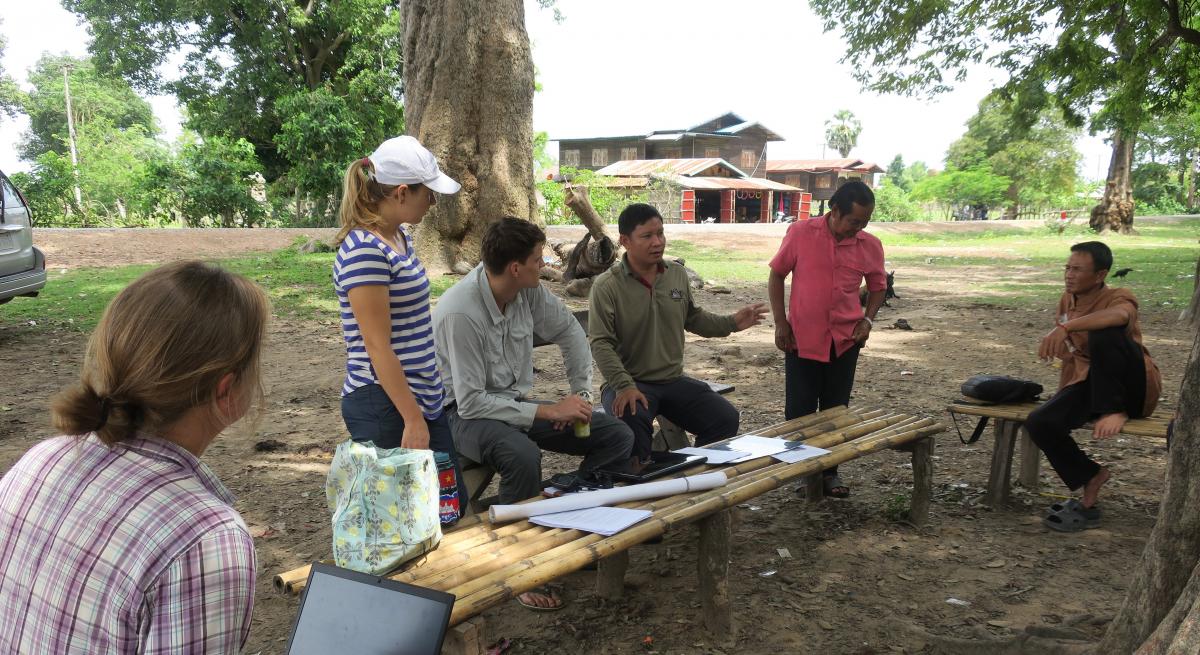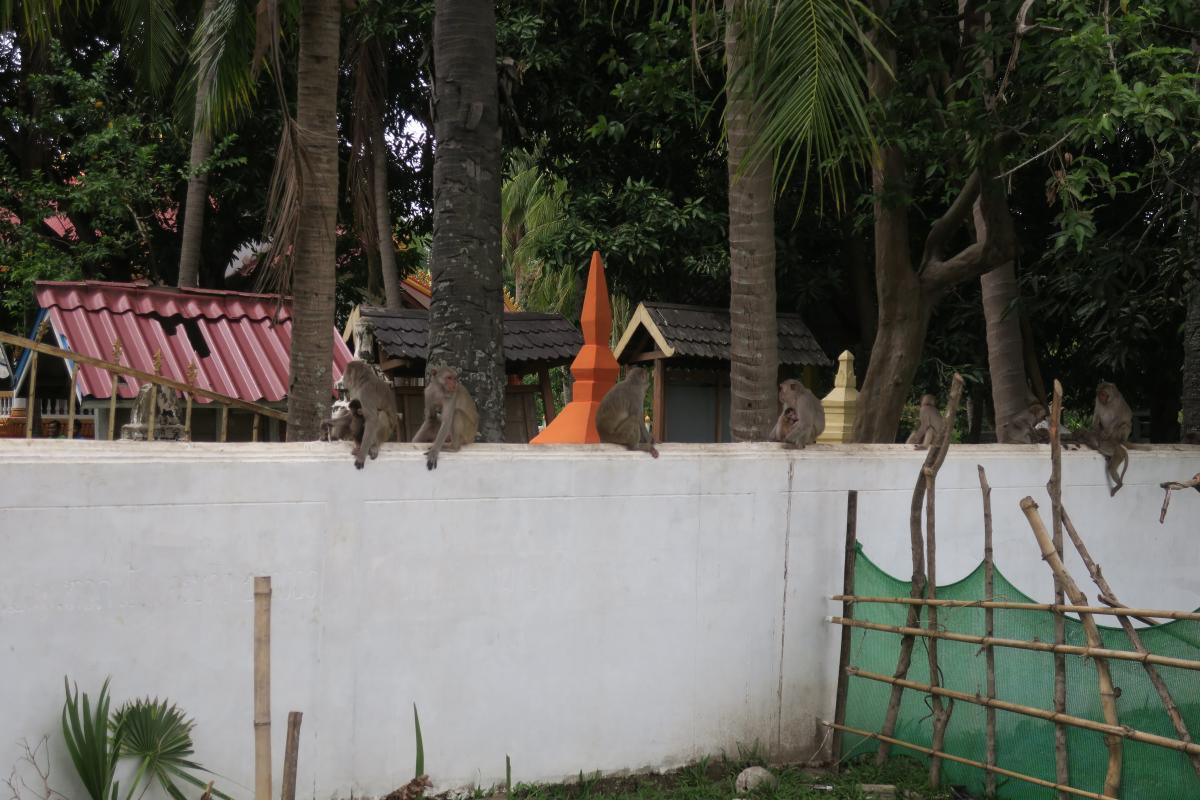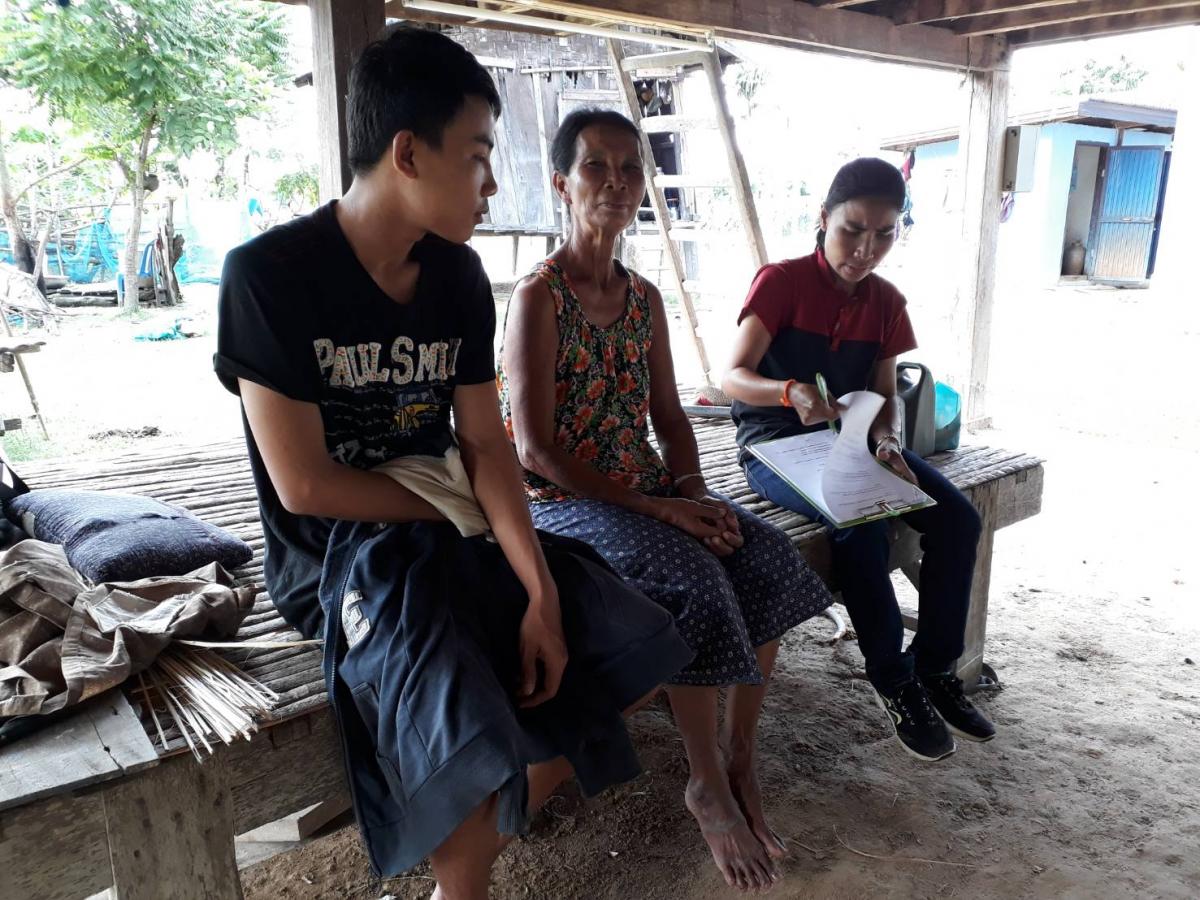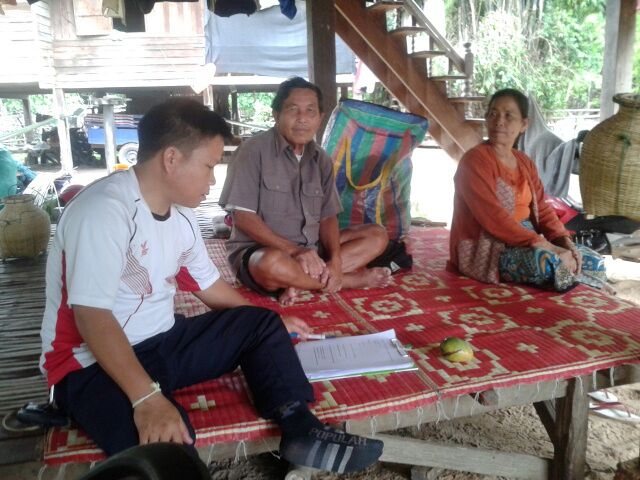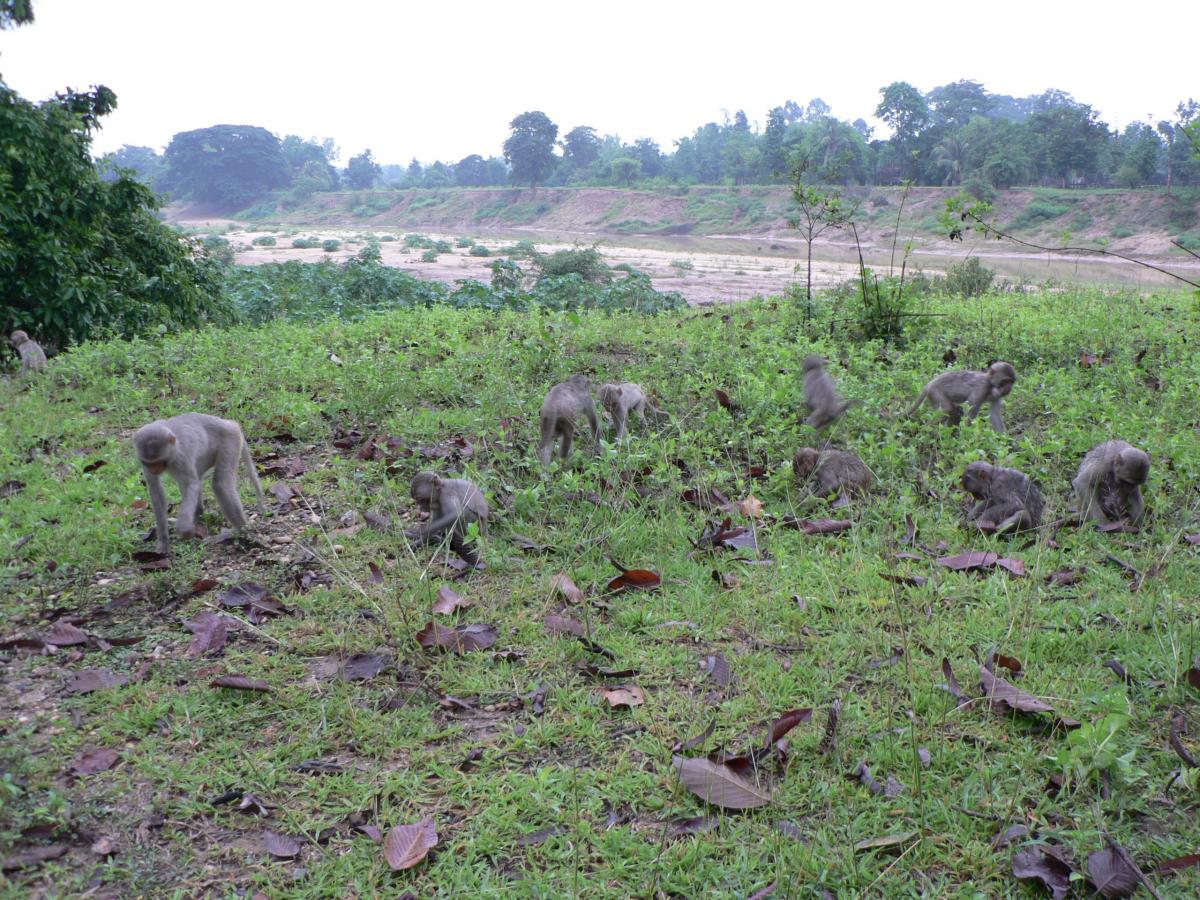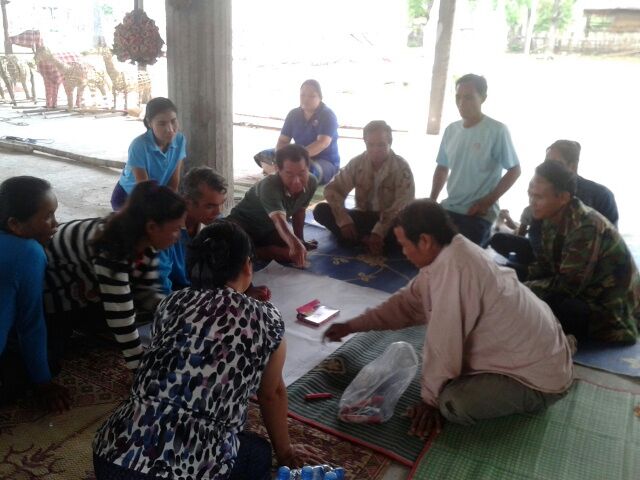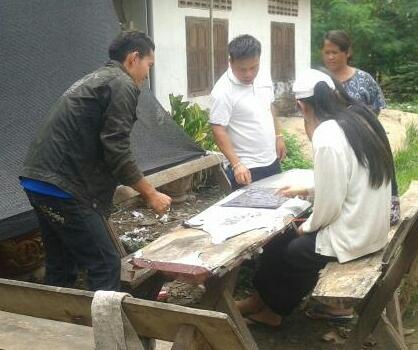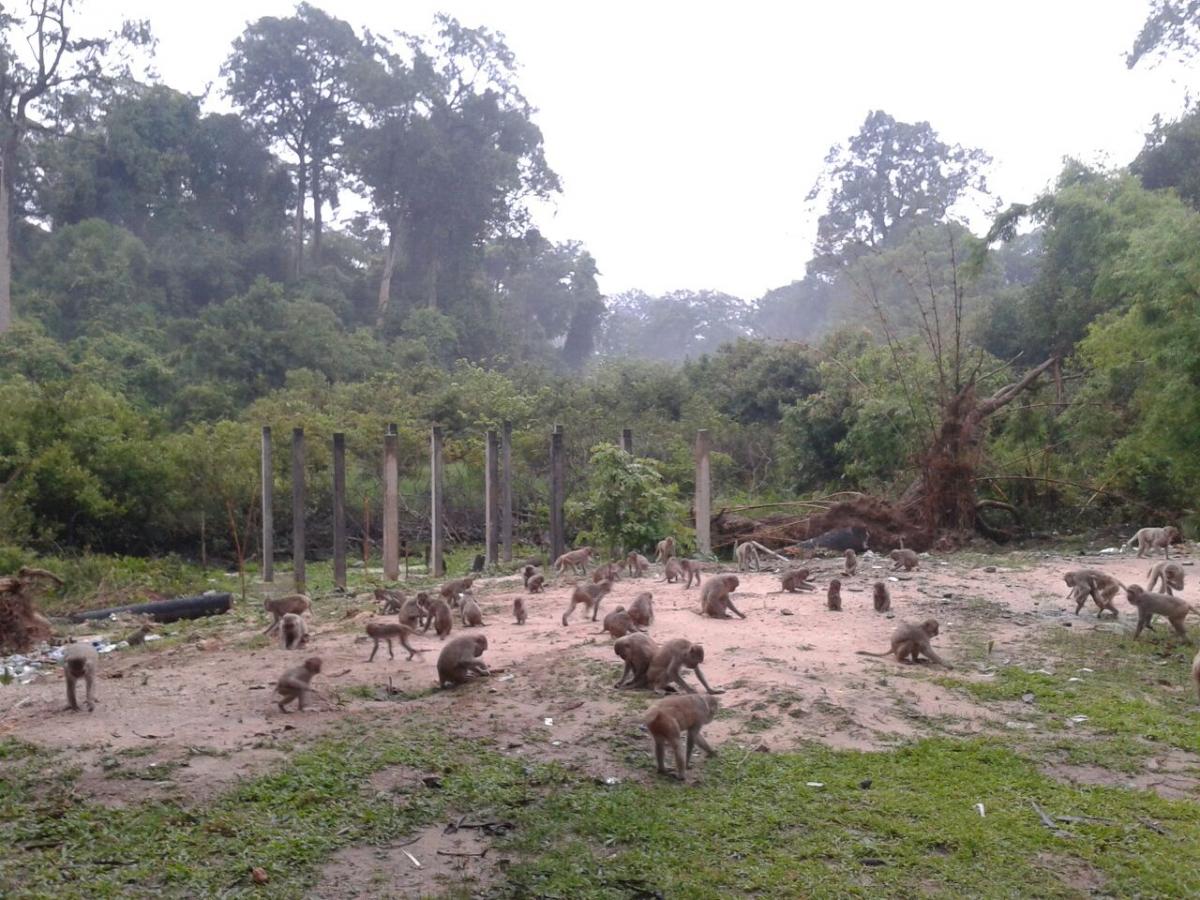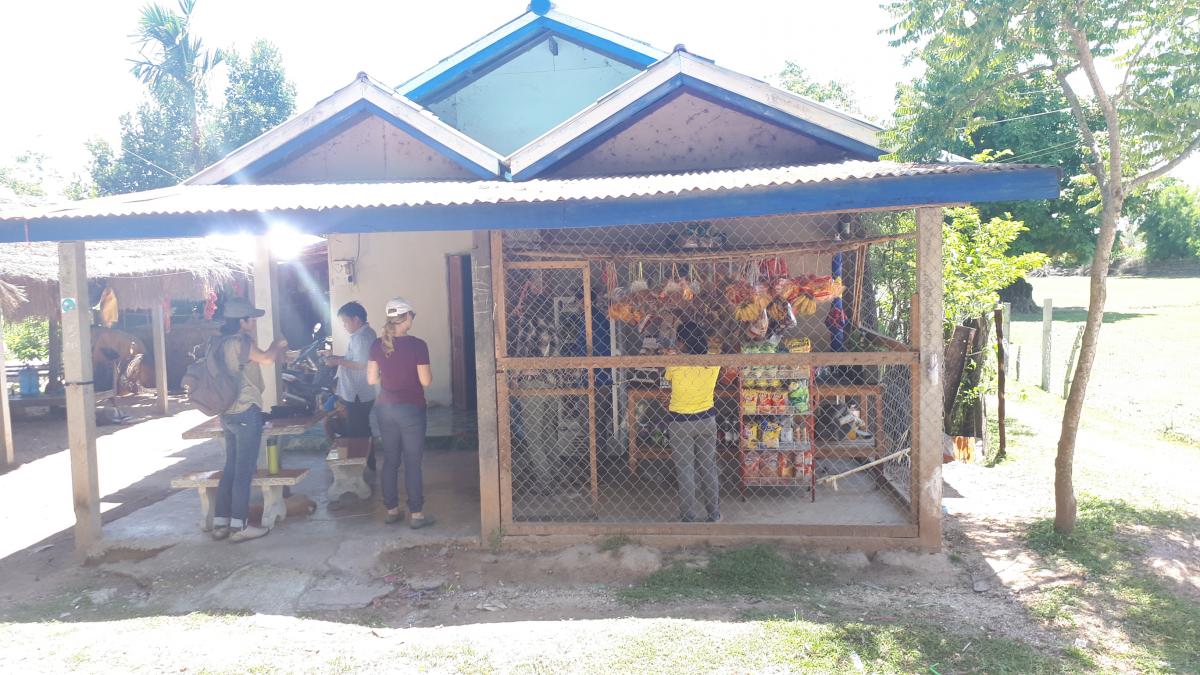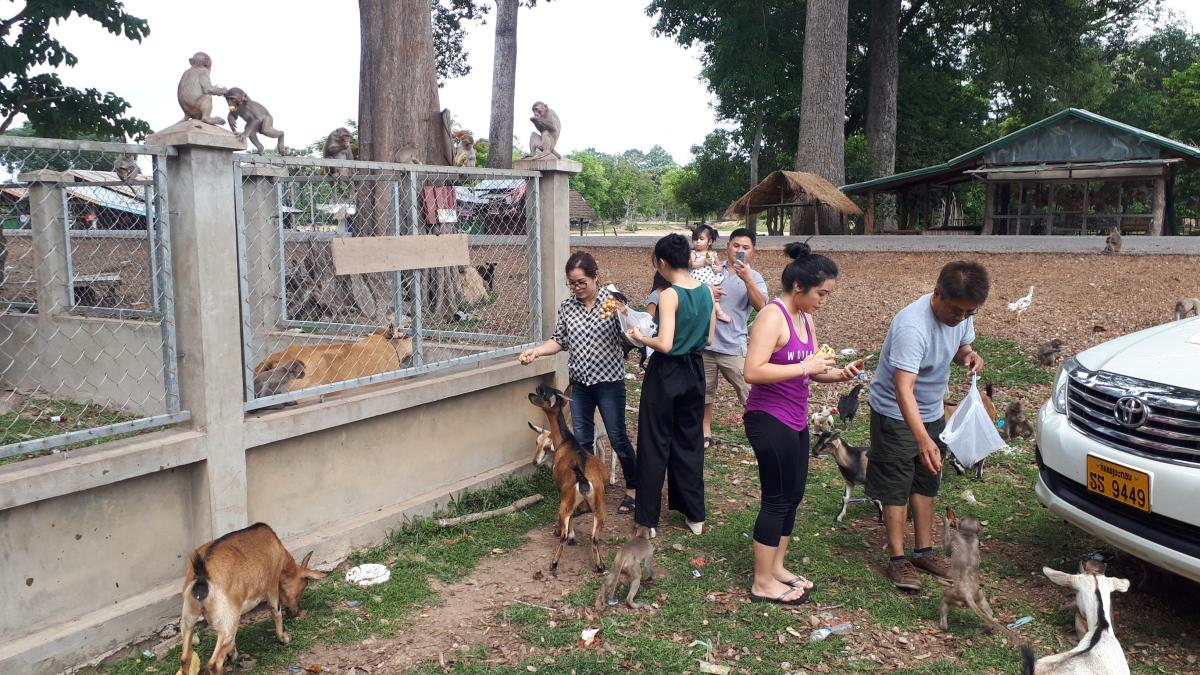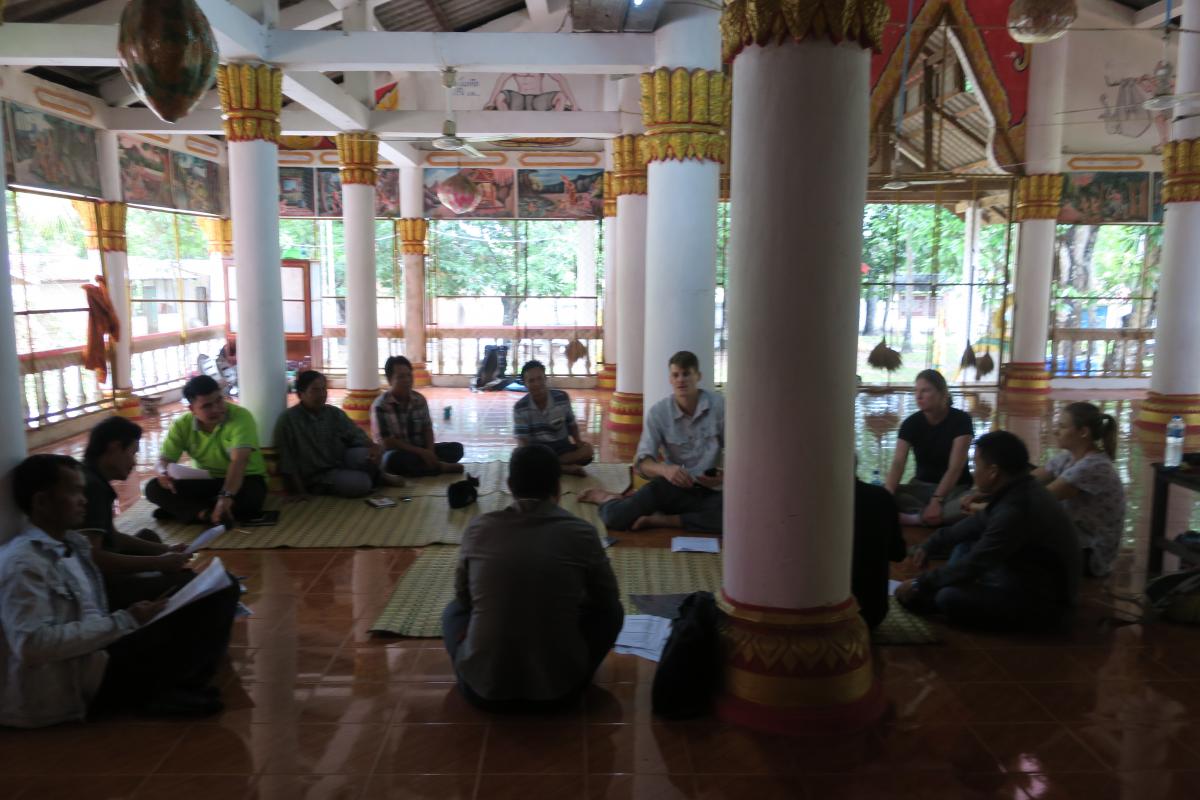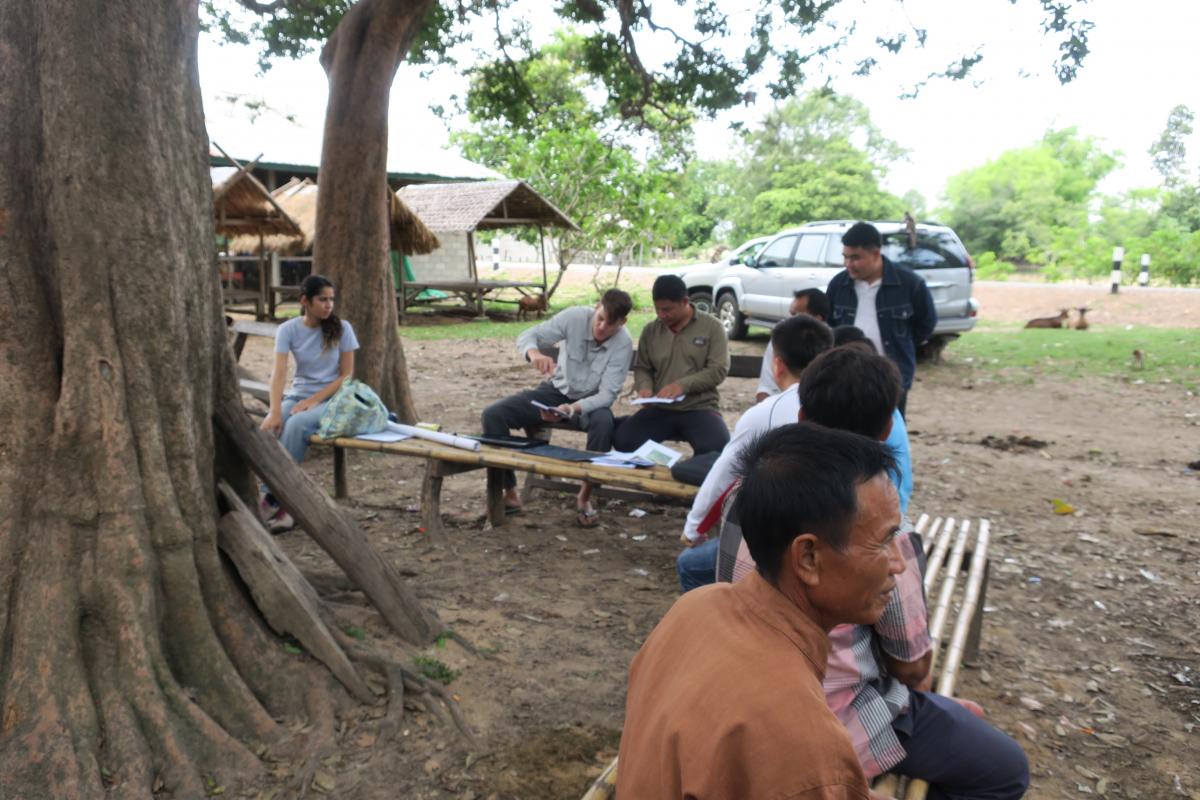Studying Rhesus Macaque in Savannakhet Wetland in Lao PDR
Since May 2018, IUCN has been studying the rhesus macaque population in Savannakhet province’s Monkey Forest (Dong Ling) as well as the extent of conflicts, particularly crop raiding, between macaque monkeys and local the communities. The monkey forest is located around 8 km NE from the Xe Champhone Ramsar Site.
The Monkey Forest is a 23 ha area, and is a sacred forest located in the village of Ban Dong Mueang, Savannakhet Province. It is believed by local villagers that a ghost that resides in the forest, called Chao Ma He Sak, provides protection for the surrounding villages. A large population of Rhesus Macaques that live within the forest are believed to be the soldiers of the ghost and must not be harmed.
While the macaques spend most of their time inside the forest area as their main roosting site, their feeding range extends across a 2km radius encompassing 9 different villages. Currently, there is no formal management in place for the site, and conflicts between humans and macaques are evident, particularly crop raiding in surrounding villages. The surrounding villagers live a subsistence life and are mostly rice farmers. The macaque population status is unknown and current estimates differ widely from 500 to 3000 individual macaque. We identified 4 different macaque troops residing in and around the Monkey forest with a total population size of 300 – 350 individuals.
The study was conducted to estimate the population of rhesus macaque, estimate their home range, identify the types of food they eat and their feeding habits. These were done to determine the extent of nuisances affecting surrounding villages and make recommendations on how to manage this conflict.
In May, a scouting mission was established to visit the forest, make initial observations on the population and plan the study. During the June field trip, a population survey was conducted to estimate population and troop sizes of macaques. One hundred interviews were also conducted in 4 villages surrounding the Monkey forest to determine the extent of the conflict, how often villagers encounter macaques raiding there crops, what is the percentage of crop loss due to macaques and measures to control and mitigate crop raiding.
Participatory mapping of the macaques’ habitat use and home range was also carried out with locals in 9 villages to determine other macaques’ populations, their home range, foraging routes and other roosting sites.
The aim of this study is also to provide advice on improving the overall management of the macaque population and their forest habitat, as well as to make recommendations for the development of livelihood alternatives based on ecotourism, in the context of climate change adaptation within this wetland area.
